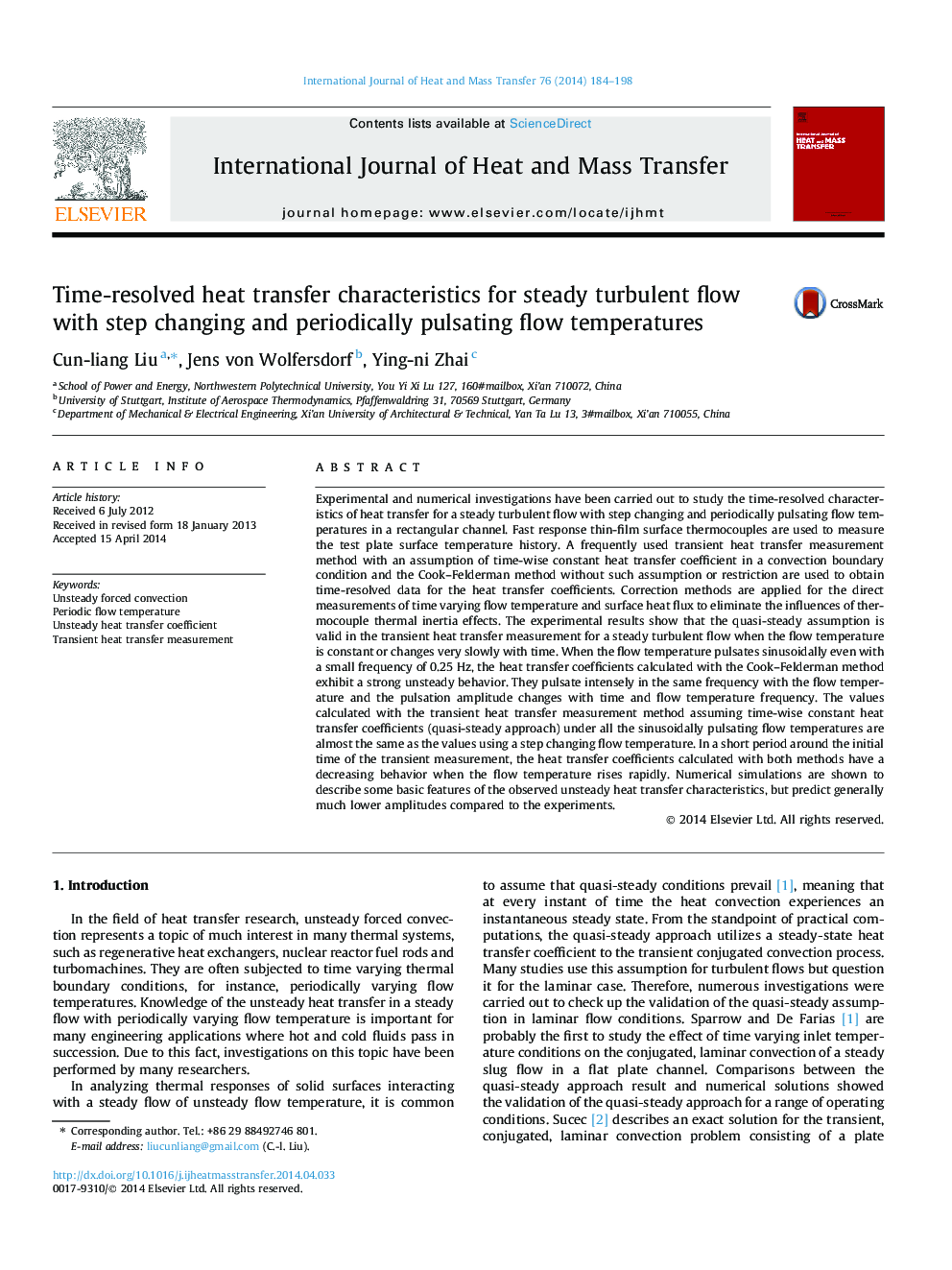| کد مقاله | کد نشریه | سال انتشار | مقاله انگلیسی | نسخه تمام متن |
|---|---|---|---|---|
| 7056768 | 1458066 | 2014 | 15 صفحه PDF | دانلود رایگان |
عنوان انگلیسی مقاله ISI
Time-resolved heat transfer characteristics for steady turbulent flow with step changing and periodically pulsating flow temperatures
ترجمه فارسی عنوان
خصوصیات انتقال حرارت حل شده برای زمان برای جریان آشفته با تغییر دما و دوره ای جریان دمایی جریان
دانلود مقاله + سفارش ترجمه
دانلود مقاله ISI انگلیسی
رایگان برای ایرانیان
کلمات کلیدی
موضوعات مرتبط
مهندسی و علوم پایه
مهندسی شیمی
جریان سیال و فرایندهای انتقال
چکیده انگلیسی
Experimental and numerical investigations have been carried out to study the time-resolved characteristics of heat transfer for a steady turbulent flow with step changing and periodically pulsating flow temperatures in a rectangular channel. Fast response thin-film surface thermocouples are used to measure the test plate surface temperature history. A frequently used transient heat transfer measurement method with an assumption of time-wise constant heat transfer coefficient in a convection boundary condition and the Cook-Felderman method without such assumption or restriction are used to obtain time-resolved data for the heat transfer coefficients. Correction methods are applied for the direct measurements of time varying flow temperature and surface heat flux to eliminate the influences of thermocouple thermal inertia effects. The experimental results show that the quasi-steady assumption is valid in the transient heat transfer measurement for a steady turbulent flow when the flow temperature is constant or changes very slowly with time. When the flow temperature pulsates sinusoidally even with a small frequency of 0.25Â Hz, the heat transfer coefficients calculated with the Cook-Felderman method exhibit a strong unsteady behavior. They pulsate intensely in the same frequency with the flow temperature and the pulsation amplitude changes with time and flow temperature frequency. The values calculated with the transient heat transfer measurement method assuming time-wise constant heat transfer coefficients (quasi-steady approach) under all the sinusoidally pulsating flow temperatures are almost the same as the values using a step changing flow temperature. In a short period around the initial time of the transient measurement, the heat transfer coefficients calculated with both methods have a decreasing behavior when the flow temperature rises rapidly. Numerical simulations are shown to describe some basic features of the observed unsteady heat transfer characteristics, but predict generally much lower amplitudes compared to the experiments.
ناشر
Database: Elsevier - ScienceDirect (ساینس دایرکت)
Journal: International Journal of Heat and Mass Transfer - Volume 76, September 2014, Pages 184-198
Journal: International Journal of Heat and Mass Transfer - Volume 76, September 2014, Pages 184-198
نویسندگان
Cun-liang Liu, Jens von Wolfersdorf, Ying-ni Zhai,
